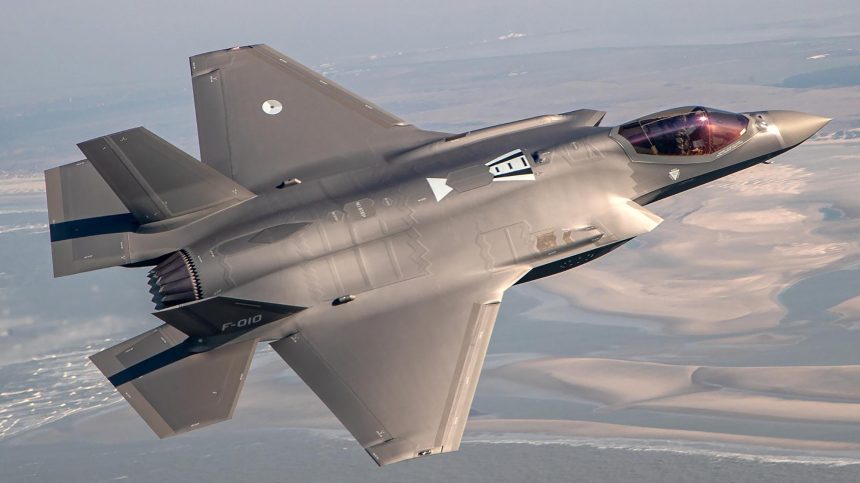As global tensions rise, the Netherlands turns to commercial aviation to reinforce its F-35 pilot pool.
A new agreement between KLM Royal Dutch Airlines and the Dutch Ministry of Defense will allow airline pilots to serve as reserve F-35 pilots in the Royal Netherlands Air Force (RNLAF). This marks a pretty interesting initiative that could blur the traditional lines between commercial aviation and national defense.
Signed on July 5, 2025, the deal enables KLM to support a group of its employees who will serve in the military reserve, contributing the equivalent of five full-time positions. These roles will include operational flying in the RNLAF F-35A. The cooperation also extends to technical and ground staff, pointing to a broader integration of expertise between the airline and the armed forces.
Reservisten maken Defensie sterker. Dankzij KLM kunnen civiele piloten met een militaire achtergrond als reservist blijven vliegen bij de Luchtmacht. Vrijwillig, professioneel, van grote waarde.
Een krachtig voorbeeld van hoe bedrijven kunnen bijdragen aan onze veiligheid. pic.twitter.com/rn5XrZtCU4
— Gijs Tuinman (@DefensieStas) July 7, 2025
“For cooperation in the cockpit, KLM is making a capacity of five ‘full-time equivalents’ (FTE) available. These hours can be distributed among a larger group of pilots who wish to fly as reservists with the Defense forces,” says a KLM release. “This is on a voluntary basis and currently applies specifically to pilots who are active in entry-level positions at KLM. They may, for example, be deployed to regularly train pilots on the F-35, ensuring they remain up-to-date.”
KLM CEO Marjan Rintel described the agreement as a way to strengthen the airline’s appeal as an employer. State Secretary for Defence Gijs Tuinman added that the growing instability of the global security landscape makes such partnerships increasingly important. He stressed the need for military and civilian organizations to support and reinforce each other.
A viable model for other air forces?
Following the announcement of the agreement, several questions have emerged. The main one is: “How will KLM pilots maintain the proficiency required to operate a 5th generation fighter while also fulfilling their responsibilities as commercial airline captains?”
Flying an F-35 operationally undoubtedly requires a high level of proficiency. However, as explained several times here, from a handling perspective, the Lightning II is significantly easier to fly than many legacy platforms. The real challenges lie in how the aircraft’s sensors are managed to execute its mission and support other assets in a networked battlespace.
That said, it is easier to maintain proficiency once pilots have been trained on the aircraft than to start training from scratch. In this respect, relying on a solid core of reservists can help fill the gaps many air forces face when it comes to the number of active pilots available at any given time. While the equivalent of five full-time positions may seem limited, this could be the foundation for a much larger dual-role force in the future. With most NATO air forces struggling to recruit and retain enough combat-qualified pilots, this may represent the first sign of a broader trend involving the civil aviation sector. Short-track training programs to refresh currencies for reservists are likely the most practical solution for air forces needing to maintain readiness.
The concept is not without precedent. In the United States, reservist fighter pilots have long been part of the force structure. For instance, the 301st Fighter Wing at NAS JRB Fort Worth, Texas, became the first standalone Air Force Reserve unit to operate the F-35A Lightning II, receiving its first aircraft in August 2024. This model demonstrates that reservists can effectively operate advanced platforms like the F-35 while complementing the active-duty force.
Concerns about the potential leakage of sensitive information are also shortsighted. Reservists must comply with the same non-disclosure obligations as any pilot who leaves active duty to join an airline or retires altogether. Moreover, the Dutch reservists selected for the F-35 are being selected among the former 5th generation fighter pilots who left active service to join KLM.
Therefore, the agreement could become a valuable force multiplier not only for the RNLAF. It provides air forces with access to experienced, tactically trained pilots who can be activated when needed. If successful, this model could serve as a blueprint for other nations looking to increase readiness without expanding active-duty ranks.
At a time when military flexibility is becoming a strategic asset, the Netherlands is exploring a path few others have taken, at least in Europe. The outcome will show whether this is a sustainable formula or a one-off experiment shaped by unique national circumstances.









